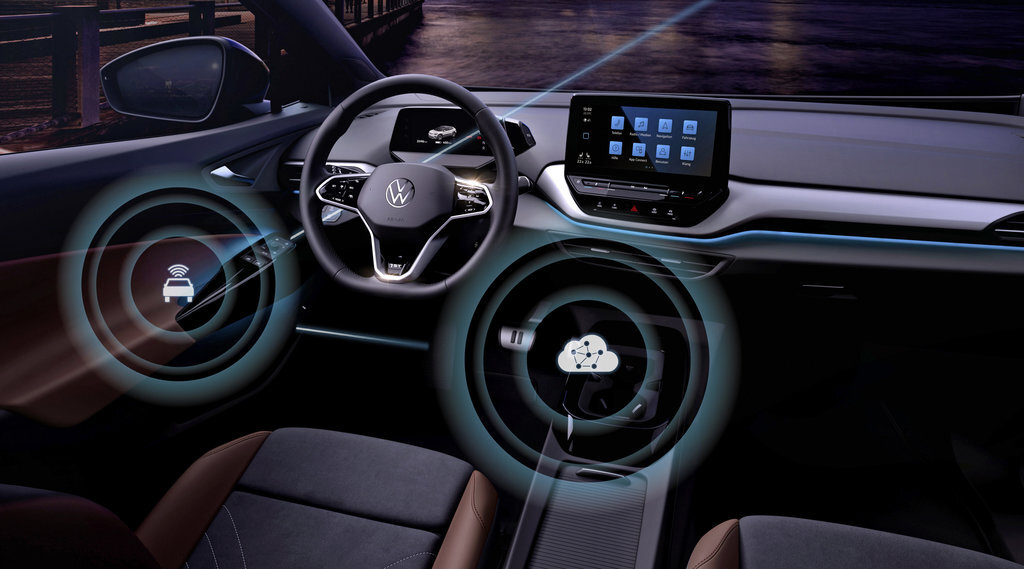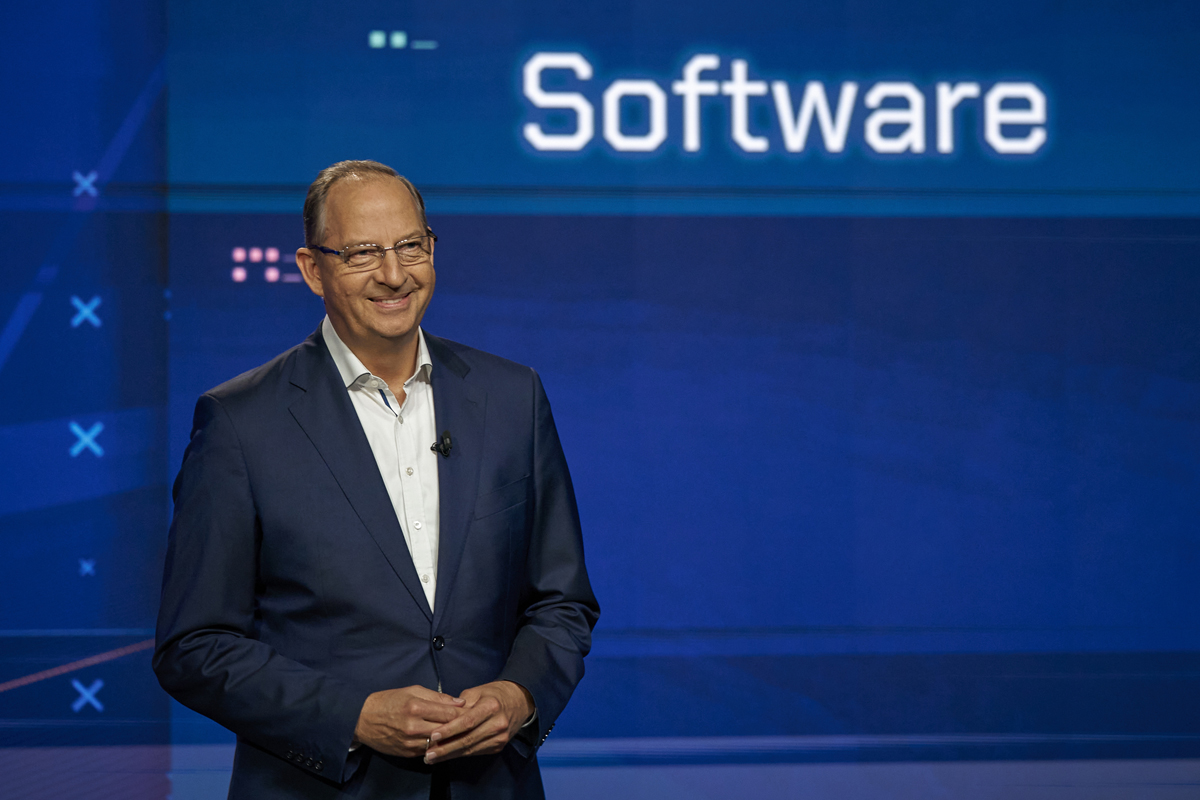Game-changing technology: Why are over-the-air updates so important?
Last week, Volkswagen announced the first over-the-air updates for the ID.3 and ID.4 – cars based on the software platform 1.1 that CARIAD is developing. In this article, we look at why these updates are so important, what they offer to the customer, and what the future holds for this technology.

Over-the-air updates represent a massive paradigm shift in the automotive world and unlock a huge amount of potential. While drivers can already update in-car apps, this functionality allows vehicles to download updates for the entire operating system via a mobile data connection – similar to the way in which your smartphone would receive an update.
This doesn’t just mean downloading the latest software versions and any bug fixes, but also entirely new features and functions. The car can download updates over its entire lifecycle, meaning it’s always up to date, even years after the purchase of the car.
At CARIAD, we’re developing software platform 1.1, on which cars like the Volkswagen ID.3, ID.4 and ID.4 GTX are based. This month, ‘First Movers Club’ customers – that is, the first customers to buy an ID.3 – can receive over-the-air updates for the very first time, with all ID.3, ID.4 and ID.4 GTX models to gradually follow. This represents a huge milestone on Volkswagen’s path to becoming a software-oriented mobility provider.
How does the customer benefit?
In the past, almost as soon as a car was produced, it was out of the manufacturer’s hands. If the customer wanted to update or repair the car in any way, it had to be taken to the workshop. With over-the-air updates, that approach is history. The vehicle owner doesn’t have to go to the dealership or workshop so often, but can instead download function and security updates over the air as frequently as they need to.
In addition, over-the-air updates increase safety for drivers, passengers and other road users. Safety-critical systems that are controlled electronically can be updated immediately if a safety-critical incident is identified. Updates also address the issue of cyber security in a new way, continuously protecting the car’s systems from external interference with the latest software specs.
Because the updates are available to download over the entire lifecycle of the car, the car is permanently up to date. As a result, the car can maintain a stable resale value over the long term. Another benefit of this is that customers no longer have to make short-term decisions about the functions that they want in their car at the point of sale. They can simply download and install these functions later on throughout the vehicle’s lifecycle.
What kinds of features can be updated over the air?
Among numerous performance and stability improvements, the first pack of over-the-air updates for the Volkswagen ID. family featured three main updates. These give us a taste of what’s possible and what we can expect from this fascinating technology in future.
Firstly, the functionality of the ID. Light has been improved. In addition to familiar functions, it now also offers visual support in other situations when using driver assistance systems. It can even help drivers to drive more efficiently, using light signals to tell them when it’s advisable to take their foot off the accelerator.
Secondly, vehicles equipped with dynamic main beam control can now better recognize other road users. The car can more quickly and more reliably identify motorbikes ahead, as well as vehicles with a solid rear light and reflectors. Assistance systems now react even more precisely, making the driving experience more comfortable.
Thirdly, the infotainment system has been given a new look. Digital buttons have been redesigned, fonts adapted and the arrangement of the function menus optimized. All of this significantly improves the readability and usability of the infotainment system.
Looking to the future
So far, the first over-the-air updates have been successfully tested in Volkswagen’s internal fleet of company cars, and now they’ve been rolled to the ‘First Movers Club’. These were the first drivers to have bought a car in the ID. family, and the first to benefit from the new updates. In the future, Volkswagen will update the software in its ID. cars every twelve weeks. And in just two years' time, this exciting new technology will be available to a fully networked fleet of over 500,000 vehicles.
CARIAD will work in close collaboration with ID.Digital, the Volkswagen Group’s new agile project unit, to ensure both quality and speed. CARIAD develops the software and establishes a basis, which ID.Digital builds on with customer-centric solutions. In this way, Volkswagen is able to benefit from the power of the Group and, at the same time, the speed of CARIAD as an agile software unit.
Over-the-air updates set new standards in the maintenance and development of new software products through agile working methods, with shorter update cycles. With continuous further development of its vehicles, Volkswagen can better stay in touch with its customers and provide the latest and greatest services. The manufacturer can learn from data evaluation and direct customer feedback to improve the experience over the long term. After all, software programming is and always will be an evolutionary process.
Importantly, only a few OEMs have so far mastered advanced over-the-air updates. The ability to download and install over-the-air updates for affordable, mass-produced vehicles is proof that high-quality technology can be democratized. In future, millions of cars produced every year will receive these updates, promising customers an incredible opportunity to benefit from this exciting technology.



.png)
